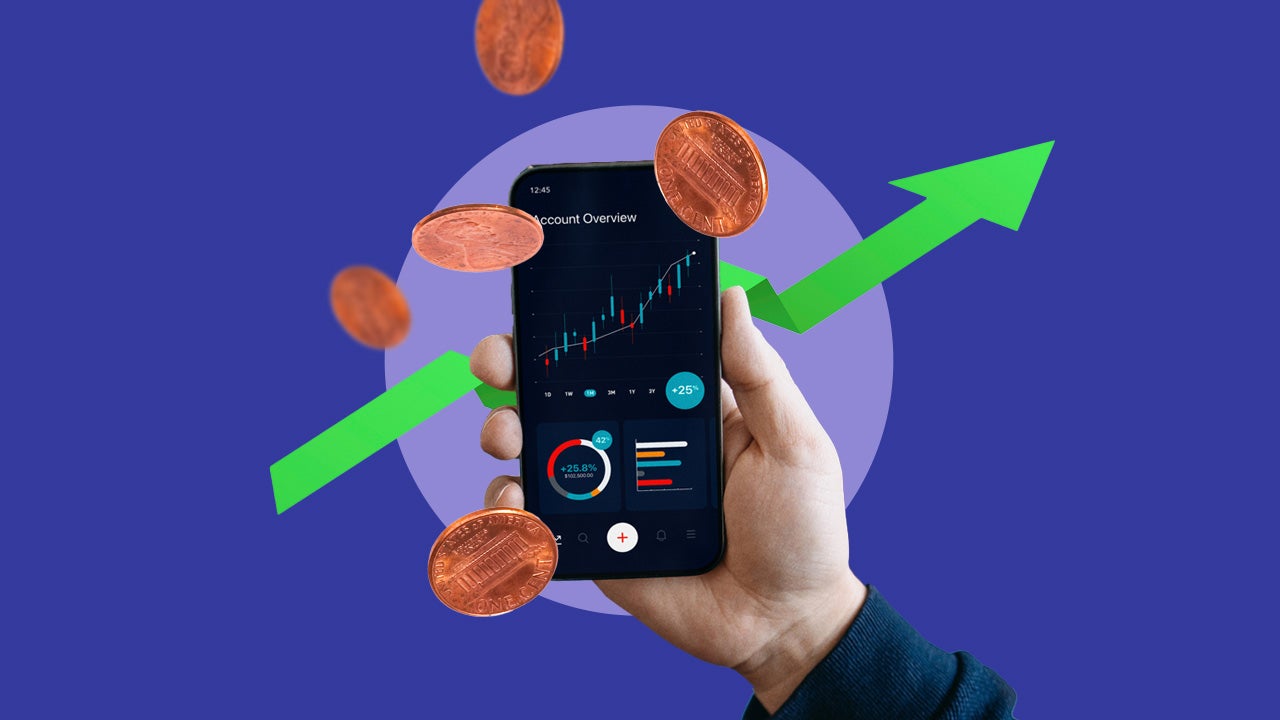A low-cost index fund can be a great way for both beginning and advanced investors to invest in the stock market. Index funds can reduce your risks compared to investing in individual stocks, and they’re a great choice if you want to minimize the time and money you spend investing, too. On top of that, index funds can offer attractive returns, in part by reducing the fees you pay.
With all these advantages, it’s little wonder that legendary investor Warren Buffett recommends index funds (notably a Standard & Poor’s 500 index fund) to most investors.
Here’s more information on how index funds work and a list of some of the cheapest index funds on the market.
What is an index fund?
An index fund is an investment fund that tracks a specific collection of assets called an index. The index can include stocks, bonds and other assets, including commodities such as gold. The most well-known index is the Standard & Poor’s 500 index (S&P 500), which includes about 500 of the largest publicly traded American companies. Other popular indexes include the Nasdaq Composite, the Dow Jones Industrial Average and the Russell 2000.
An index fund is a passive investment that tracks the assets included in the index. The index fund does not actively invest in the market. Instead, it merely tries to match the performance of the index by holding the same assets in the same proportions as the index.
An index fund can be bought and sold as either an exchange-traded fund (ETF) or a mutual fund. (Here’s the difference between ETFs and mutual funds.)
What are the major US indexes?
Index funds can track any market index. Here are some of the most popular stock indexes:
- S&P 500: The S&P 500 index tracks around 500 of the largest companies in the U.S.
- Dow Jones Industrial Average: The Dow Jones Industrial Average is often referred to in the financial media and tracks 30 of the largest companies in the U.S.
- Nasdaq Composite: The Nasdaq Composite measures the performance of more than 3,000 companies listed on the Nasdaq stock market and is known for its heavy exposure to the technology sector.
- Russell 2000: The Russell 2000 tracks the performance of around 2,000 of the smallest publicly traded companies in the U.S.
- Russell 3000: The Russell 3000 is a broad stock market index that tracks the performance of about 96 percent of the investable U.S. stock market.
How to invest in low-cost index funds
The two most important things to know about investing in low-cost index funds are the index’s long-term returns and the cost to own the index fund. That is, you’ll want to earn the potentially largest return while paying as little as possible to the fund company to achieve that return.
Long-term returns
Investors looking for a top index fund should first check out what returns it could produce.
An index’s long-term performance is a good gauge to how it might perform in the future, but it is not a guarantee. Any fund will list its performance over a one-to-10-year period as well as from the fund’s inception. It will show you the annualized return over these periods, so you can get a sense of what you could earn in an average year.
Stock funds are likely to perform better long term than bond funds, but bonds may outperform stocks over shorter time periods. During periods of rising interest rates, bond prices will fall.
The S&P 500, for example, has returned about 10 percent annually over long periods of time, though it’s done better than that over the last decade or so, averaging 12.6 percent from 2013 to 2022. The Nasdaq Composite has shown an even better return over the past decade, putting up annual returns of over 13 percent from 2014 to September 2023.
The S&P 500 and Nasdaq Composite are widely followed indexes, but many fund companies create their own proprietary indexes that are not as widely known. So you’ll want to check the long-term returns of the index fund over time to see how it could perform.
And when investing in funds don’t forget the importance of mean reversion. This technical investing term effectively means that a fund’s performance moves toward its long-term average. So, funds that have been outperforming their long-term average for the last year or two are more likely to revert to their long-term average than to sustain their above-trend performance. It’s important to note that mean reversion is one of many concepts of investing and is not a guarantee of any future performances.
Cost
Imagine you had a choice of a Big Mac at two McDonald’s restaurants. Both serve the same hamburger, but one charges a higher price. You could literally buy the same thing but pay more for it at one location compared to the other.
And it’s the same issue with index funds that are based on the same index. The key point for investors in index funds is to avoid unnecessary costs, and a few checks can help you do this.
To check the cost of a fund, you can look it up with a quick search and determine its expense ratio. The expense ratio tells you what percent of your investment you’ll pay as a fee to the fund company. For example, a typical index fund might charge an expense ratio of 0.06 percent. That means you’d pay a fee of $6 annually for every $10,000 you had invested in the fund. It’s important to remember that lower expense ratios are better for investors as it results in higher returns on investments.
Another cost to watch out for is called a sales load. The sales load is basically a commission to the salesperson, and it’s money that comes right out of your pocket. The good news is that it’s easy to avoid this cost, since many fund management companies offer no-load funds. And it’s a fee that applies only to mutual funds, so if you’re buying an ETF, you can rest easy here.
To find no-load mutual funds, you can search for them at broker sites such as Fidelity Investments and Charles Schwab.
9 of the lowest-cost S&P 500 index funds
The S&P 500 is one of the most followed indexes in the world, and it has a number of index funds that track it. Like that McDonald’s hamburger, the returns of these funds are going to be about the same over time, so the key differentiator is each fund’s expense ratio.
Here are 9 of the lowest-cost funds that track the S&P 500:
- Fidelity 500 Index Fund (FXAIX) – Expense ratio: 0.01 percent
- Fidelity ZERO Large Cap Index (FNILX) – Expense ratio: 0 percent
- iShares Core S&P 500 ETF (IVV) – Expense ratio: 0.04 percent
- Schwab S&P 500 Index Fund (SWPPX) – Expense ratio: 0.02 percent
- SPDR S&P 500 ETF Trust (SPY) – Expense ratio: 0.09 percent
- State Street S&P 500 Index Fund Class N (SVSPX) – Expense ratio: 0.16 percent
- T. Rowe Price Equity Index 500 Fund (PREIX) – Expense ratio: 0.20 percent
- Vanguard 500 Index Admiral Shares (VFIAX) – Expense ratio: 0.03 percent
- Vanguard S&P 500 ETF (VOO) – Expense ratio: 0.03 percent
It’s also worth noting that many other funds are “closet trackers,” meaning they don’t technically track an index but do so in practice due to what they own. Many such funds also charge much more than the low-cost funds mentioned above and may not deliver the same high performance.
Low-cost index funds vs. ETFs vs. mutual funds
You can buy low-cost index funds as either an ETF or a mutual fund, and well-known indexes such as the S&P 500 will have both available. The list above, for example, contains both kinds. (The three-letter ticker symbols are for ETFs, while the five-letter symbols are for mutual funds.)
In many cases, what determines the kind of fund you can buy is the platform you’re using. That is, some platforms such as 401(k) retirement plans will allow you to purchase only mutual funds. Similarly, while ETFs are generally available at all brokers that allow stock trading, you may not be able to buy all mutual funds, depending on the broker’s relationship with the fund company. For example, most brokers don’t carry Fidelity’s no-fee fund, so you’ll have to go to Fidelity to get it.
In general, stock index mutual funds have a lower expense ratio than stock index ETFs, as you can see in the chart below. But mutual funds as a whole are more expensive, because they tend to be actively managed, rather than passively managed, as most ETFs are. In addition, mutual funds may have a sales load, and that’s not the case with index ETFs.
But given the ability to choose any S&P 500 fund, there’s little reason to prefer an ETF over a mutual fund or vice versa. Ultimately what you’re looking for is the lowest-cost fund that delivers the same overall investing performance.
Bottom line
As you can see, the key difference between index funds that track the same index is basically just the cost. That’s why experts tell investors to focus on the cost of funds when looking at funds based on well-known indexes such as the S&P 500. A fee that doesn’t go into the fund manager’s pocket is money that can compound for you for years.
Editorial Disclaimer: All investors are advised to conduct their own independent research into investment strategies before making an investment decision. In addition, investors are advised that past investment product performance is no guarantee of future price appreciation.
Read the full article here

















